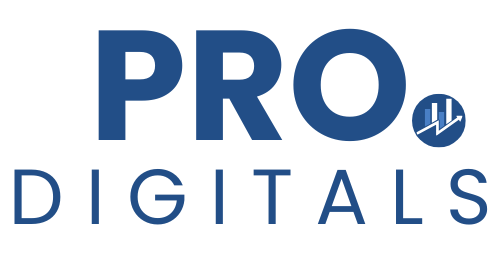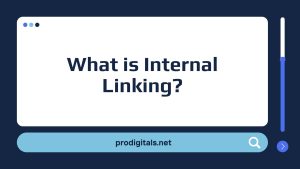In the world of SEO, relevance plays a crucial role in determining how search engines rank web pages. Relevance refers to how well a page’s content matches a user’s search intent, making it essential for attracting the right audience. Pages that are relevant to a specific topic are more likely to receive higher visibility in search results, leading to increased traffic and engagement.
Understanding what makes a page relevant involves analyzing keywords, user behavior, and content quality. When a page aligns closely with what users are searching for, it gains authority and trustworthiness. This connection between user queries and page content is what search engines prioritize when deciding which pages to show at the top of results.
When creating or optimizing content, focusing on relevance can lead to better outcomes. By ensuring that pages meet the needs and interests of potential visitors, the chances of success in SEO improve significantly. This is why learning about relevance and relevant pages is vital for anyone looking to enhance their online presence.
Understanding SEO Fundamentals
SEO, or search engine optimization, is vital for driving quality traffic to a website. It involves techniques that enhance visibility on search engines. Knowing the basics helps businesses and content creators attract more visitors and achieve their goals.
Definition of SEO
SEO stands for search engine optimization. It refers to the set of strategies designed to improve a website’s position in search engine results. The main goal is to make a website more visible when users search for specific keywords.
Effective SEO involves both on-page and off-page techniques. On-page SEO includes optimizing content, titles, and tags. Off-page SEO focuses on building backlinks and improving domain authority.
These strategies help search engines understand what a website is about. The right SEO practices can lead to higher rankings, more organic traffic, and better user engagement.
Importance of SEO
SEO is essential for any business with an online presence. It helps attract targeted visitors who are more likely to become customers.
When a website ranks high in search results, it gains credibility. Many users trust top-ranking sites more than those on lower pages.
Moreover, good SEO can boost user experience. Optimized websites load faster and are easier to navigate. This leads to longer visit durations and lower bounce rates.
Lastly, SEO provides measurable results. Tools like Google Analytics show traffic patterns and user behavior, allowing businesses to refine their strategies. This data-driven approach enables continuous improvement and growth.
Exploring the Concept of Relevance
Relevance plays a crucial role in how search engines deliver results. It focuses on matching content with what users are searching for, helping them find the most useful information. The following sections will explore relevance in algorithms and the importance of user intent.
Relevance in Search Engine Algorithms
Search engines use complex algorithms to determine relevance. These algorithms analyze various factors to decide which pages to show in response to a query.
Key factors include:
- Keywords: The presence and placement of keywords in the content.
- Content Quality: High-quality content that provides value to the user.
- Backlinks: Links from other reputable sites that indicate trustworthiness.
Search engines also consider the context of the query. A person’s search history or location can affect which pages are shown. This ensures that users receive the most relevant results based on their specific needs.
User Intent and Content Matching
User intent refers to what a user hopes to achieve with their search. Understanding this intent is essential for creating relevant content.
There are three main types of user intent:
- Informational: Users seek answers, explanations, or insights.
- Navigational: Users want to find a specific website or page.
- Transactional: Users intend to make a purchase or complete a transaction.
Matching content to the user’s intent can improve a website’s relevance in search results. This means creating targeted content that addresses specific questions or needs, increasing the chances of attracting the right audience.
Identifying Relevant Pages
Identifying relevant pages is essential for effective SEO. It involves determining which pages best match the user’s search intentions and the content quality. Key criteria and page authority help in making these assessments.
Criteria for Page Relevance
Several factors determine if a page is relevant. Content Quality is crucial; the information should be accurate, up-to-date, and informative. It must address the specific questions or needs of the target audience.
Keyword Usage is another important criterion. Effective use of target keywords in titles, headings, and throughout the text signals relevance. Pages should also be organized logically, making it easier for readers to find the information they seek.
User Experience impacts relevance. If a page loads slowly or is difficult to navigate, visitors are likely to leave quickly, which negatively affects its ranking. Additionally, content should match the search intent of users, whether they are looking for information, products, or services.
Analyzing Page Authority
Page authority reflects the credibility of a webpage. Backlinks play a significant role in this assessment. Pages with quality links from respected sites are seen as more authoritative. The anchor text of these links also matters, as relevant keywords can boost authority.
Domain Authority is another aspect to consider. It indicates the overall strength of the domain hosting the page. A higher domain authority often correlates with better visibility in search results.
Engagement Metrics, such as time on page and bounce rate, give insight into how users interact with the content. High-quality pages that engage users effectively tend to rank better.
By focusing on these criteria and authority measures, one can effectively identify relevant pages for SEO purposes.
On-Page SEO Strategies
On-page SEO strategies focus on optimizing individual web pages to improve their search engine rankings. These strategies help enhance visibility and ensure that content meets user needs effectively.
Keyword Optimization
Keyword optimization is crucial for improving visibility in search results. It involves selecting the right keywords that potential users are likely to search for.
- Research: Identify relevant keywords using tools like Google Keyword Planner or SEMrush. Consider search volume and competition.
- Placement: Use the chosen keywords in key positions such as the title, headings, and throughout the content. This helps search engines understand the topic of the page.
- Density: Maintain a natural keyword density. Too many keywords can lead to keyword stuffing, which negatively affects ranking.
- Long-tail Keywords: Target long-tail keywords as they are less competitive and can attract more focused traffic.
Content Quality and Structure
Creating high-quality content is essential for effective on-page SEO. Proper structure helps both users and search engines navigate the page easily.
- Use Headings: Break content into sections with clear headings (H1, H2, H3). This improves readability and helps search engines parse the structure.
- Informative Content: Ensure that the content is informative, relevant, and engaging. Answer the questions that users might have.
- Length: Aim for comprehensive coverage of the topic while avoiding fluff. A balanced word count helps keep users interested.
- Multimedia: Incorporate images, videos, and infographics to enhance content engagement. Ensure these elements are optimized with appropriate alt tags for better search visibility.
Technical SEO Considerations
Technical SEO focuses on the backend of a website and its performance. This includes website speed and how well the site performs on mobile devices. Both factors impact search engine rankings and user experience.
Website Performance Factors
Website performance is crucial for SEO. A fast-loading site helps retain visitors and reduce bounce rates. Common performance factors include:
- Page Speed: Aim for your site to load in under 3 seconds.
- Server Response Time: A quick response improves user experience.
- Image Optimization: Compress images to reduce load times without sacrificing quality.
Using tools like Google PageSpeed Insights can provide valuable insights. Regularly monitoring these factors helps identify issues before they affect rankings.
Mobile Optimization
With more users accessing websites via mobile devices, mobile optimization is essential. Here are important aspects:
- Responsive Design: Ensure the site adjusts well to different screen sizes.
- Mobile Page Speed: Optimize loading times for mobile users, usually more limited than desktop users.
- User Experience: Simplify navigation and ensure buttons are easy to click.
A mobile-friendly site improves user engagement and can positively influence search rankings. Regularly testing on various devices is key to maintaining a good mobile experience.
Link Building and Off-Page SEO
Link building is a crucial part of off-page SEO. It focuses on acquiring backlinks from other websites. These connections help improve a site’s authority and visibility in search results. Another important aspect is social signals, which can also affect a website’s ranking.
Establishing Relevant Backlinks
Relevant backlinks come from websites that share similar topics or industries. These links show search engines that the content is trustworthy. To build relevant backlinks, one can:
- Reach Out: Contact other site owners and suggest link exchanges.
- Create Quality Content: Write informative articles that others want to link to.
- Guest Blogging: Offer to write posts for other blogs in exchange for backlinks.
Using tools like Ahrefs or Moz can help identify good link opportunities. It’s important to focus on quality over quantity. A few high-quality backlinks are more valuable than many low-quality ones.
Social Signals and Their Impact
Social signals refer to likes, shares, and interactions on social media platforms. These actions can indicate content popularity and engagement. While not direct ranking factors, they can influence SEO in several ways:
- Increased Visibility: Popular content is more likely to be shared and linked to.
- Brand Recognition: High visibility on social media helps build a brand’s reputation.
- Traffic Boost: Engaging posts can drive more users to a website.
Focusing on creating shareable content can enhance social signals. Engaging with followers and encouraging shares can further strengthen a site’s online presence. These efforts support off-page SEO and can lead to higher rankings.
Measuring Relevance and Performance
Relevance in SEO can be tracked using various tools and metrics. These methods help website owners understand how their pages perform and connect with user intent.
SEO Tools and Analytics Platforms
Several SEO tools help measure relevance and performance. Some popular options include:
- Google Analytics: Tracks website traffic and user behavior, providing insights into page performance.
- SEMrush: Offers keyword tracking and competitor analysis to see how relevant content ranks compared to others.
- Ahrefs: Analyzes backlinks and content performance, giving ideas to improve relevance.
These tools provide data about keywords, traffic sources, and user interaction. Metrics like bounce rate and average session duration can indicate if visitors find content relevant. Regularly reviewing these metrics can help make informed decisions about content updates.
Interpreting Relevance Metrics
Relevance metrics are crucial for understanding a website’s performance. Key performance indicators (KPIs) include:
- Click-Through Rate (CTR): Measures how many people click on a website from search results.
- Time on Page: Indicates how long users stay on a specific page, showing engagement levels.
- Return Rate: Tracks whether visitors return to the site, reflecting satisfaction with content.
Analyzing these metrics helps identify which pages resonate with users. High CTR and long time on page usually mean content is relevant. Regularly examining these metrics allows for adjustments in content strategy to better meet user needs.
Content Relevance and User Experience
Content relevance significantly impacts user experience. When content meets user needs, it increases satisfaction and keeps visitors engaged. Understanding how to align content with what users seek and how to improve engagement metrics is crucial for effective SEO.
Aligning Content with User Needs
To align content with user needs, it is essential to conduct keyword research. This helps identify what users are searching for and guides content creation.
Clear headings and subheadings can also improve alignment. They allow users to skim content and find information quickly.
Including FAQs or lists, such as top tips or common questions, can enhance usability. Ensure that the content answers potential queries directly and is easy to navigate.
Regularly updating content keeps it relevant. This practice also shows users that the website is active and cares about providing accurate information.
Improving Engagement Metrics
Engagement metrics are vital for assessing user interaction. Metrics such as bounce rate, average session duration, and pages per session indicate how well a site retains visitors.
Incorporating multimedia like images and videos can enhance engagement. Visual elements break up text and make content more appealing.
Calls-to-action (CTAs) are also important. They guide users on what to do next, whether signing up for a newsletter or exploring more articles.
Monitoring analytics helps identify which content performs best. This enables adjustments to focus on what resonates with the audience, enhancing the overall user experience.
SEO Best Practices for Relevant Content
Creating relevant content is essential for SEO. This practice helps websites rank better in search engine results. Two important aspects of producing relevant content are regular updates and avoiding keyword stuffing.
Regular Content Updates
Search engines favor sites that frequently update their content. It signals that a page is active and provides fresh information.
To keep content updated, it helps to:
- Refresh existing articles with new data or insights.
- Add recent research or trends related to the topic.
- Replace outdated links or references with more current ones.
Regular updates can improve a site’s authority. They show visitors that the content is reliable and useful. Planning a schedule for updates can help maintain consistency.
Avoiding Keyword Stuffing
Keyword stuffing occurs when a writer uses keywords excessively. This practice can lead to poor user experience and may even harm search rankings.
Instead of overloading content with keywords, focus on these strategies:
- Use keywords naturally within the text. They should blend in with the flow.
- Target long-tail keywords, which are more specific and less competitive.
- Include synonyms and related terms to enhance relevance without repeating the same phrases.
By using keywords wisely, it improves readability and engages the audience. This approach will likely lead to better SEO performance over time.
Adapting to Changing SEO Trends
The world of SEO is always changing. To succeed, it is important to keep up with updates and use smart strategies that fit future trends. This section covers two important areas: staying informed about algorithm changes and using predictive strategies.
Staying Informed on Algorithm Updates
Search engines update their algorithms regularly. These updates can greatly impact website rankings. Keeping track of these changes is crucial for anyone involved in SEO.
Ways to Stay Informed:
- Follow SEO Blogs: Websites like Moz, SEMrush, and Search Engine Journal share updates and insights.
- Join Online Communities: Platforms like Reddit and LinkedIn have SEO groups where members discuss new trends.
- Attend Webinars or Conferences: These events provide valuable information and networking opportunities.
Understanding how these updates work helps in adjusting SEO strategies. Regular adjustments can keep a website relevant and maintain its rankings.
Predictive SEO Strategies
Predictive SEO involves anticipating future trends and changes in search behavior. This method requires research and analysis to stay ahead.
Key Areas for Predictive SEO:
- Keyword Research: Use tools to find emerging keywords relevant to the target audience.
- User Behavior Analysis: Study how visitors interact with websites to predict their future needs.
- Content Trends: Monitor popular topics and formats, like videos or podcasts, to create engaging content.
Using predictive strategies allows for proactive adjustments. This can lead to better rankings, as websites anticipate user needs before they arise. Keeping ahead of the curve ensures a constant relevance in a dynamic SEO landscape.




